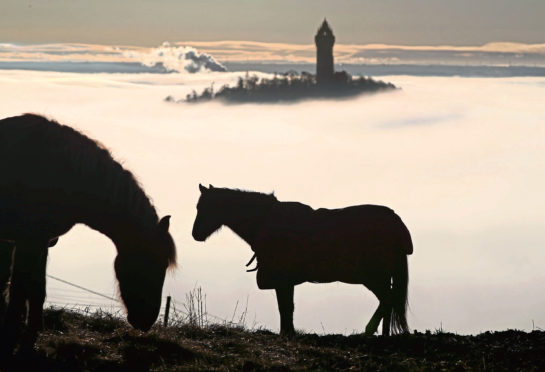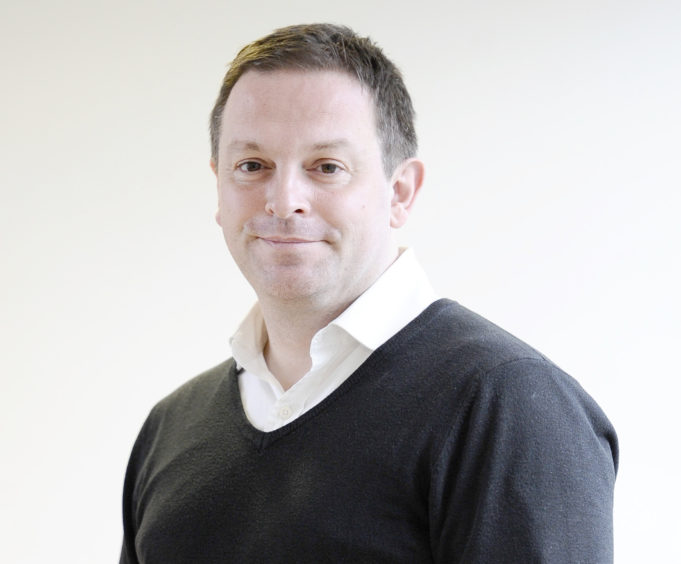One of those free glossy magazines dropped through my letterbox the other day.
I was carting it trashwards, unread, when a glance at the cover stopped me. It was a bewitching twilit woodland landscape by a young artist called Erraid Gaskell.
The headline was A Sense Of Place.
Gaskell’s work (I then read) is rooted in the Perthshire market town of Crieff, perhaps best known for having its own enjoyably dreadful McGonagall couplet: Ye lovers of the picturesque, if ye wish to drown your grief,/Take my advice and visit the ancient town of Crieff.
Gaskell puts it better: “My favourite view is the Sma’ Glen, late in the day when the sun is peeking through and turning everything orange and beautiful.
“It doesn’t look like anything special on any maps, it’s not the sort of place you’d visit unless you were from here and knew about it, but it’s just this little corner of Perthshire where you can go and escape from everything.”
Looking harder, seeing more, is an artist’s way of being.
For the rest of us there hasn’t been a better opportunity to do the same since the advent of the internal combustion engine.
The Covid lockdowns have made bumpkins of us all, giving us little option but to get busy in our own little corner, to live smaller, to take a slow, appraising look around.
The geography available to us has shrunk, and a kind of positive experiential myopia been imposed. We are friendly neighbourhood walkers and explorers, peerers and pokers – students of the local.
Many of us live in areas which are similarly “nothing special on any map”– a black dot, a few crosses, perhaps a river and a railway line, A-road entry points (or escape routes).
We are relearning that these places are indeed special, rediscovering the folk memory and the stardust magic of home, that essential human longing to simply belong.
For me, as I’m sure for many others, this has meant a romantic reconsideration, even a psychological sexing up, of my immediate environment.
I live in Stirling, famous for its castle and its Wallace Monument, which sit like Statler and Waldorf on the skyline.
But I also see more clearly now the mountains that hunch like guards around our valley; the medieval walls with their crenels and gun loops that once made for forbidding outskirts but are today a feature of our main drag; the river Forth that runs gently and largely unmolested through our periphery; the historical quirks in our wildly varying architecture; the network of independent bookshops, guitar stores, tattoo parlours and hip cafes that have recently sprung up to bring a teasingly bohemian kink to our ailing centre.
I observe what’s there and the intricate traces of what used to be; how things have been put together over centuries, and why.
I’d been thinking about this, about place, for a while before that magazine arrived.
Questions of identity, origin and belonging have in recent years smashed through the democratic surface like one of Dune’s giant sand worms, and with the same destructive ferocity.
The Brexit and Scottish independence referendums had forced us to confront who we are and who we are not long before Covid erected its dividing walls.
But it was easy in the zip and whirl of normal times to miss what’s around us.
Place was a one-dimensional film lot as we dashed damp and jangling and just about primped from home to train to morning crisis meeting to afternoon post-mortem and one-on-one appraisal to gloomy after-work alcoholic settler to train and back, finally, to a front door vaguely visible in the evening pall.
And repeat.
We know how all this can press down on us, stripping us of inner peace and contentment, ruining relationships and concentration, infecting us with anxiety and depression and self-loathing, rasping away at our humanity and tolerance.
Yet on and on it seemed to go, a moving walkway with no exit until the track ran out, and we’d plummet off the edge.
Then suddenly, this pause. The Covid virus, with its tragedies and frustrations, has done terrible damage and broken many hearts.
But also, for a period – and, who knows, perhaps for longer than that – it has quieted the shrieking dib-dabs caused by the commute and office politics, the harsh strip-lighting and crap coffee and absence of privacy, the daily hurtle of always having to get somewhere and then get somewhere else and then somewhere else again.
The chance to find our sense of place again has been unexpected, and it has been beautiful.

